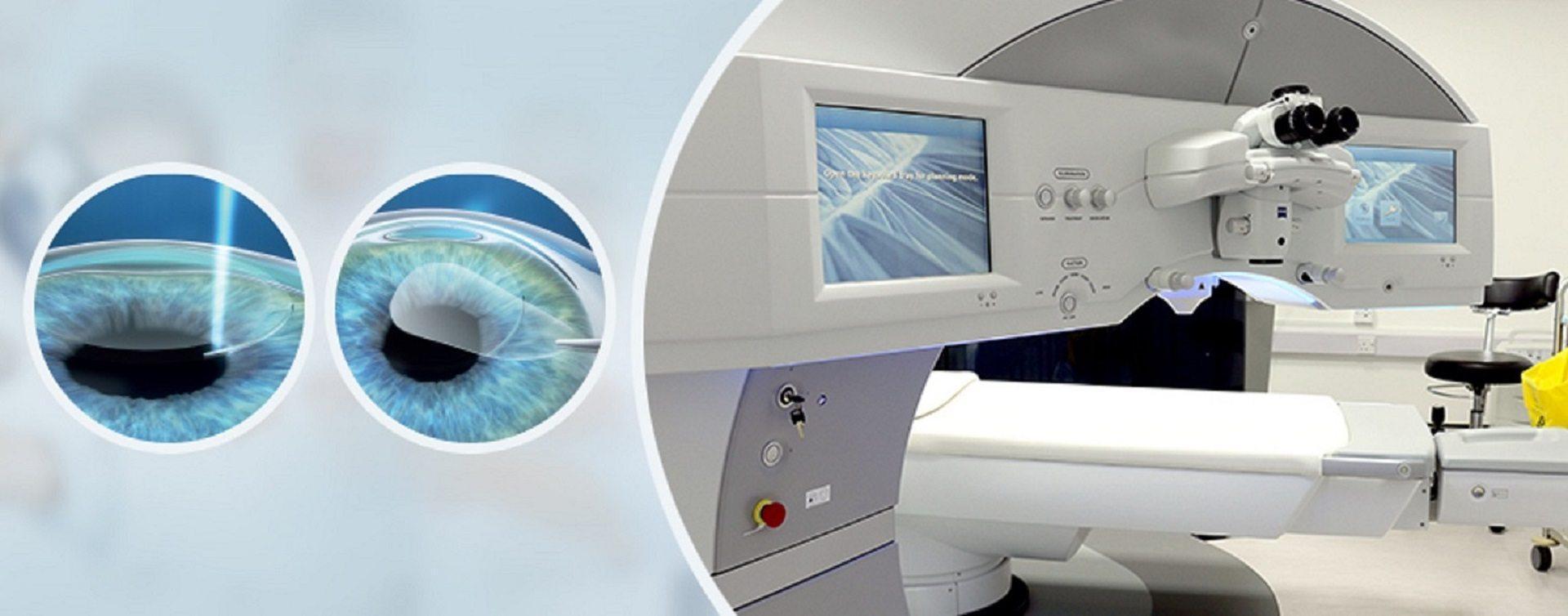Types of Procedures
LASIK is the most commonly performed laser vision correction procedure in North America. However, LASIK is not the only option and is not the right vision correction procedure for everyone. Depending on your circumstances and prescription, some of the following laser vision correction options may be better suited to your unique visual needs.
- Laser Epithelial Keratomileusis (LASIK), for people, previously turned down for LASIK because of thin or unusually shaped corneas
- Photorefractive Keratectomy (PRK), for people with larger pupils, thin corneas, other corneal issues, or dry eyes
- Monovision, for people who are growing older and wish to leave one eye slightly nearsighted while the other eye is fully treated for distance vision
- Conductive Keratoplasty (CK), for people who are growing older and are seeking a technology that improves near vision, allowing them to not to depend on reading glasses
- Implantable Collamer Lenses (ICL), for people whose prescriptions fall outside the accepted range for laser refractive procedures, have extreme nearsightedness, or who may otherwise not be an ideal candidate for laser vision correction
- Phakic Intraocular Lens (P-IOL), for people who are over 40 and whose prescriptions fall outside the accepted range for laser vision correction procedures, have extreme nearsightedness, or who may otherwise not be an ideal candidate for laser vision correction such as LASIK.
LASIK Surgery Treatments
LASIK procedures are so popular because they allow not only more freedom from glasses and contacts, but also the chance to see better than you would with corrective eyewear.
There are several types of LASIK eye surgery treatments, and your surgeon will decide which one is best for you, depending on your needs.
LASIK treatments can correct some of the most common vision problems, including nearsightedness, farsightedness, and astigmatism.
Our physicians use latest eye-mapping technology to analyze the problems with your eyesight as well as each eye’s unique irregularities. After determining if you’re eligible for LASIK, your surgeon will recommend the LASIK procedure that makes the most sense for achieving your ideal vision.
This may include:
- Traditional LASIK Surgery – (laser-assisted in-situ keratomileusis) is the most often performed laser vision correction procedure. A hinged flap is created on the eye’s surface, and an excimer laser is used to reshape the underlying corneal tissue, so that the eye’s focusing power is improved.
- PRK: Photo Refractive Keratectomy Laser Eye Surgery – Similar to LASIK surgery, PRK surgery involves using a laser to reshape the cornea. But instead of creating a flap, a thin outer layer of the cornea is polished to allow the laser access to reshaping the eye… PRK may be a better alternative for certain eye conditions.
- Custom Wavefront Optimized LASIK Surgery – WaveLight refractive technology combines the latest surgical advancements into a LASIK procedure personalized for your ideal vision. This system offers a unique procedure that actually accounts for the natural shape of your eye as it corrects your cornea. As a result, LASIK with WaveLight refractive technology can help keep the quality of your vision, ensuring your eyes are at their most natural and their most useful.
You will receive some simple instructions to follow in the days leading up to your LASIK treatment, including not wearing contact lenses for about a couple of weeks to a few days. Your surgeon will discuss with you what to expect during and after your laser eye surgery procedure, including recovery time.

Great site! Lots of information on easy to follow pages.
Thank You